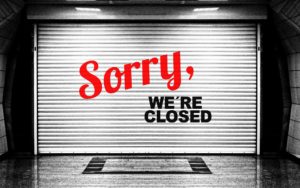As the online eCommerce boom moves steadily onward, more brick-and-mortar stores are closing their doors because their brand must downsize to be financially sustainable. While the public perception of downsizing may be detrimental to local companies, rightsizing can make sure that a business continues to thrive in this volatile marketplace.
Downsizing vs. Rightsizing—What’s the Difference?
The key difference between downsizing and rightsizing is that one is reactive while the other is proactive. Downsizing is where businesses are in the position of needing to lay people off. It can be stressful, disruptive, and have a significant impact on company morale.
Rightsizing, on the other hand, is a constant part of the management process. Leaders look at a variety of factors that will affect how they run their stores, including:
- Market needs and trends
- Alternative approaches and new ideas
- New technologies
The focus of rightsizing is on the future, and as such, leaders use rightsizing technologies to steer their organization in the best direction for their brand. This helps develop a clear strategic direction, which includes the gradual hiring or re-education of employees as necessary (which, as opposed to a mass layoff, can improve how locals view your store).
Store Closures Don’t Necessarily Mean Failure
A common misconception today is that the closing of a store means that the store has failed. But with the retail landscape constantly evolving, the closing of stores is often strategic and is a reflection of how consumers are shopping as opposed to outright business failure.
The online retail industry is growing at a rapid rate, but brands shouldn’t react by closing all of their physical stores. Consumers, as happy as they are to shop online, are even happier to find exactly what they want in a physical store for a number of reasons, including:
- Online retailers cannot instantly deliver what a consumer wants (many consumers want to walk away with something in-hand).
- Shopping in a brick-and-mortar store presents the opportunity for social interaction and advice.
- Consumers want to try things on to check the quality of the garment and to guarantee fit.
Deliver the Best In-Store Experience
 The key to brick-and-mortar retailers surviving today is to differentiate themselves by delivering the best in-store experience for their consumers. Associates can go beyond asking, “Is there anything I can help you find?” and can instead be presented with an entire purchase history for that customer beforehand, allowing the associate to make more meaningful recommendations. They can reserve fitting rooms, know who is in which fitting room, and be instantly alerted the moment a customer needs assistance.
The key to brick-and-mortar retailers surviving today is to differentiate themselves by delivering the best in-store experience for their consumers. Associates can go beyond asking, “Is there anything I can help you find?” and can instead be presented with an entire purchase history for that customer beforehand, allowing the associate to make more meaningful recommendations. They can reserve fitting rooms, know who is in which fitting room, and be instantly alerted the moment a customer needs assistance.
Having data on consumer preferences, the number of customers visiting stores, and conversion rates is critical in the rightsizing process. Brands can make intelligent decisions on staffing levels, what sizes and types of garments sell best in which locations, and how they can improve the customer experience.
Technology is a critical player for online and offline stores alike. With the right tools and data-driven insights, any store can increase customer conversions, see a drop in returns, and significantly boost the number of people who walk out with their next favorite piece of clothing in-hand.

